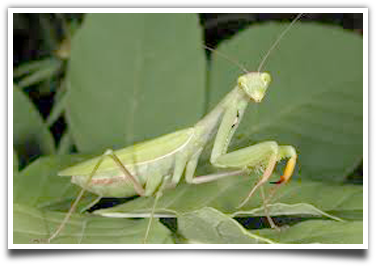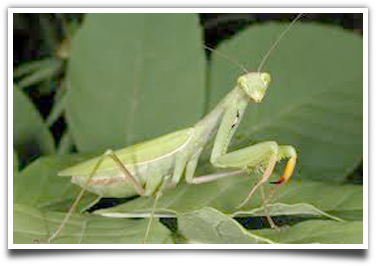All over the world, there are approximately one thousand and eight hundred known species of insects grouped from the genus Mantis. Because of the anatomical uniqueness of the mantis’ striking and very defined front legs that are bent at a particular angle resembling a praying position, this genu is most commonly referred as the praying mantis. The praying mantis comes from an entire, bigger group of mantids, from the class Insecta and from the phylum Anthropoda. Most praying mantis facts are regarding its morphology and general appearance.
The characteristic appearance of the praying mantis is distinguished in three different parts: the cranial part or the head, the thorax, which includes the neck, is the middle part that connects the wings and the legs to the body, and finally the abdominal region. This abdominal region also distinguishes the females from the males because females have bigger sized abdomens that make them larger and heavier compared to male mantises.

Other praying mantis facts talk about how mantises survive in their habitat. Because their natural color is in shades of either green or brown, some lighter and some darker in color, they can blend in well and camouflage with the environment they live in. This is of great advantage for them since being carnivorous predators, they can quietly stalk and watch over their prey while waiting for the perfect timing to attack.
The long neck in the thorax enables the triangular head of the mantis to rotate in a one hundred eighty degree manner. This capability and their ability to fly, in addition to having two laterally located compound, complex eyes and three medially situated simple eyes in the head that enable them to detect prey fifty feet away and their uniquely angled front legs with distinctly sharp spikes, maximizes their predatory skills in detecting, observing, grasping, and holding their targets. Observations state that they usually eat the head of the insects they attack first.
Mantises feed on insects, moths, crickets, grasshoppers, butterflies, flies and even lizards, frogs and birds. They also feed on other mantises. Commonly observed during copulation, the female praying mantis eats the head of her mate. This may happen during or after mating which adds to the list of interesting praying mantis facts. Studies state that this is helpful for the female mantis as their source of food and energy as well as for the development and growth of the eggs since male mantises have high protein content. The female mantises are capable of laying twelve up to as much as four hundred eggs in a liquid that is foamy and bubbly in consistency. This liquid becomes a protective and hard egg case that enables the eggs to survive even during the winter season. When the eggs hatch during spring time, their first meal is often their own sibling. The estimated life span of a praying mantis is approximately twelve months or one year.
Mating Process of Praying Mantises Have you ever wondered how praying mantes mate? Praying mantises are most popular for the females’ practice of eating their More... Taking Care of Praying Mantis There are actually quite a number of people who have praying mantises as their pets. Some of these people are More... |
The praying mantis is very important to the environment especially to the farmers. Its contribution to the ecosystem completes the list of some of the gathered praying mantis facts. Being a predator, the existence of praying mantises controls the population of pests that harm the crops of the farmers and the plants of home gardeners although they are also capable of eating their own kind. Physically looking at mantises, they may resemble the shape and form of a grasshopper but they are rather more directly allied to cockroaches. There are also different folklores about praying mantises.
According to the French people, the praying mantis can help a lost child by leading him to find his home. To the Greeks, mantis corresponds to the word prophet while the Chinese use mantises to treat a number of illnesses such as impotence and thyroid enlargement or goiter. Nocturnal enuresis or bed wetting that occurs mostly during childhood are said to be possibly treated with ingestion of egg cases that are roasted. But these claims and ancient myths are not yet medically approved.















